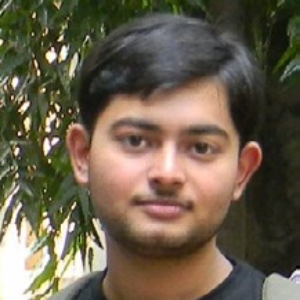Title : Characterization of Nano-Structured Siliceous Frustules of Amphora sp. and Application in Nanodevices
Abstract:
Diatoms are unicellular photosynthesizing algae having unique shells made up of siliceous materials covering the cell, called “Frustule”. Chemically the frustules are inert being made up of silicon dioxide–mainly nanopatterned silica acting as nanofabrication factories. The objective of the present work was to develop a nanoelectronic metal-insulator-semiconductor (MIS) device by using biogenic diatom-based silica which can be an alternative route to achieve gate dielectric applications. Also, an effort was given to optimizing the growth recipe of a Diatom-SiO2 ultra-thin film by varying growth temperature, time and Au layer thickness. The first step of the work was the characterization of Amphora frustule being isolated from the east coast of India. The structure analysis, optical and chemical characterization of the frustules have been investigated through UV-Vis, SEM, FESEM, TEM, EDS, FTIR, Confocal laser scanning microscope, spectrofluorimeter, and cathodoluminescence studies. Electron microscope images gave a clear picture of the surface topology and intricate morphology of the nano-sized silica framework of the species and its ultrastructural pattern. The maximum absorbance of the frustule was around 230nm as revealed by Uv-Vis spectroscopy. The frustules of Amphora have both photoluminescence and cathodoluminescence property and the maximum absorbance was centered around 460-470nm, whereas confocal microscopic pictures revealed strong autofluorescence property of it when viewed under FITC filter. After proper characterization of the frustule, a high-quality crystalline thin film (~22 nm) of biogenic SiO2 was grown on p-Si (100) substrate by employing the vapor-liquid-solid (VLS) method. The biogenic amorphous silica was used as a source material in VLS growth technique. The formation of crystalline silicon dioxide films was confirmed by X-ray diffraction study and surface morphology being analyzed by FESEM study. Also, the optical properties like the absorption coefficient, the extension coefficient reflective index were studied by employing spectroscopic ellipsometry. The thickness of the film was also confirmed by ellipsometric measurements. The capacitance-voltage characteristics of Al/biogenic SiO2 film/p-Si metal-oxide-semiconductor (MIS) capacitor indicated the growth of an excellent thin film of diatom-SiO2 with high effective dielectric constant. The performances of newly formed MIS fabricated device were investigated in detail by measuring effective oxide thickness, hysteresis and frequency dispersion showing good results. Thus, this work provides a cost-effective novel alternative technique to grow high-quality ‘Diatom-SiO2 films’ on the p-Si substrate which may be used as the reliable gate dielectrics on semiconductor-based MIS devices and circuits.
Take Away Notes:
• Detailed characterization of the Amphora frustules and its potential ability would be discussed in detail.
• Green technology based biogenic silica of diatom origin being applied in the field of electronics to develop a semiconductor-based MIS device has been characterized and studied thoroughly.
• This work provides a cost-effective novel technique to grow high-quality ‘Diatom-SiO2 films’ on p-Si substrate which may be used as an alternative technique for achievement of reliable gate dielectrics on semiconductor-based MIS devices and circuits.


